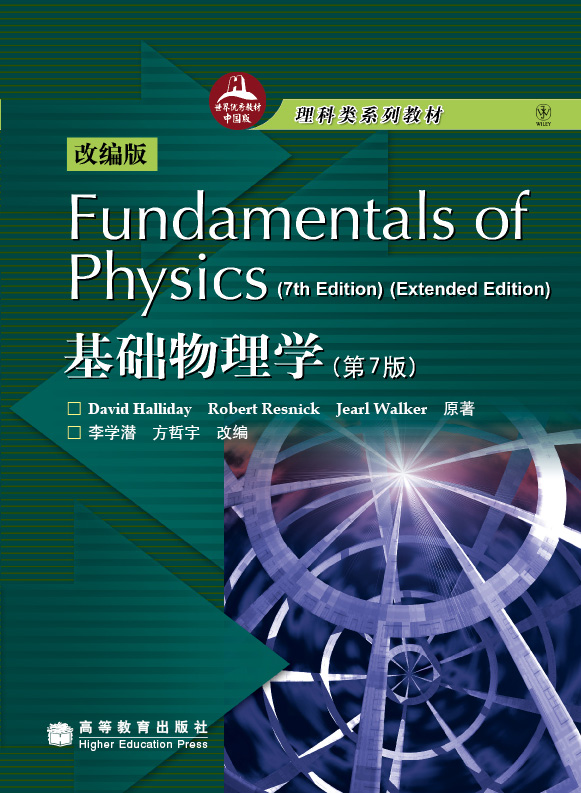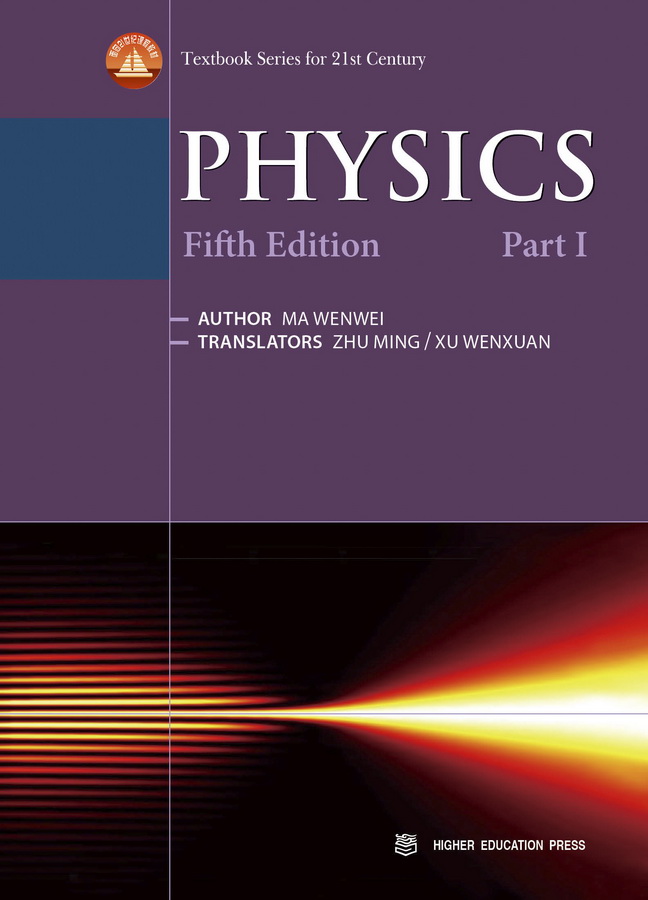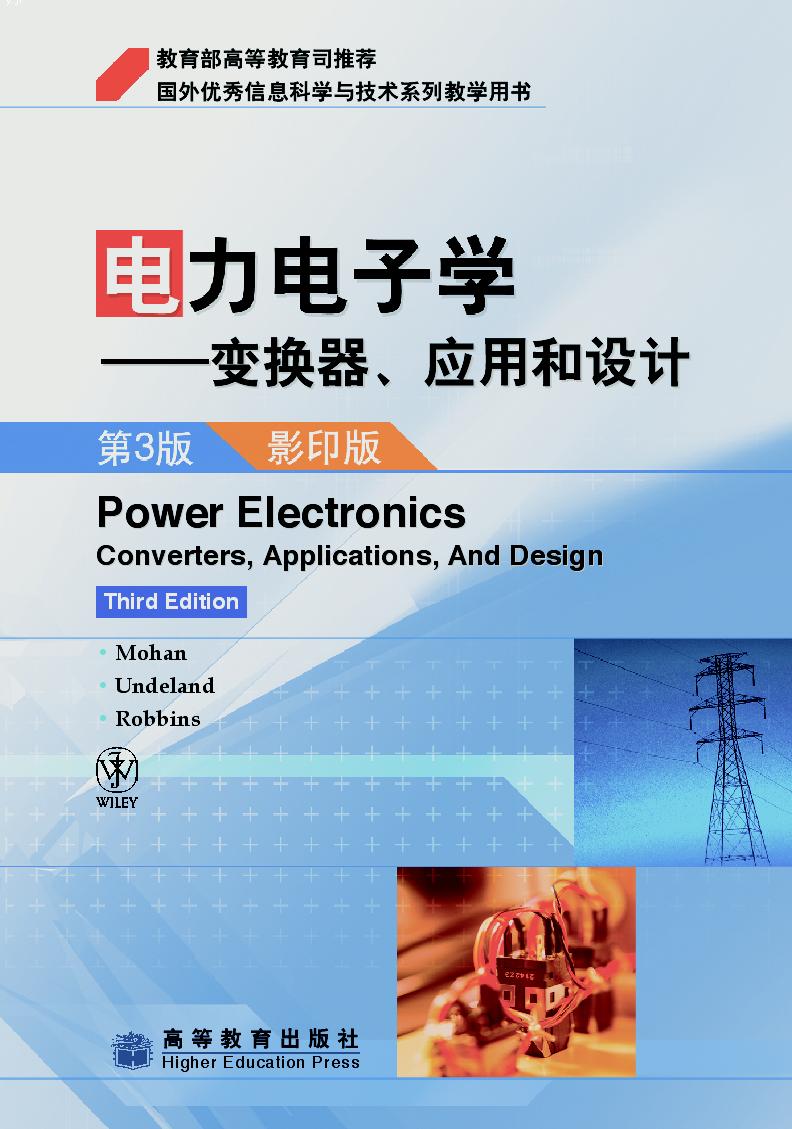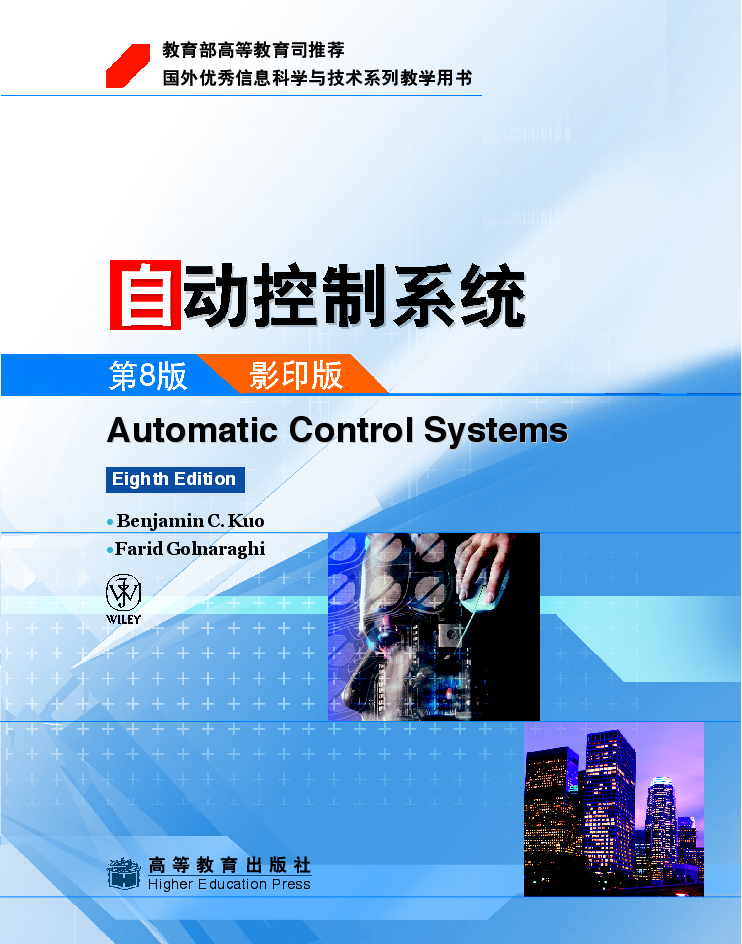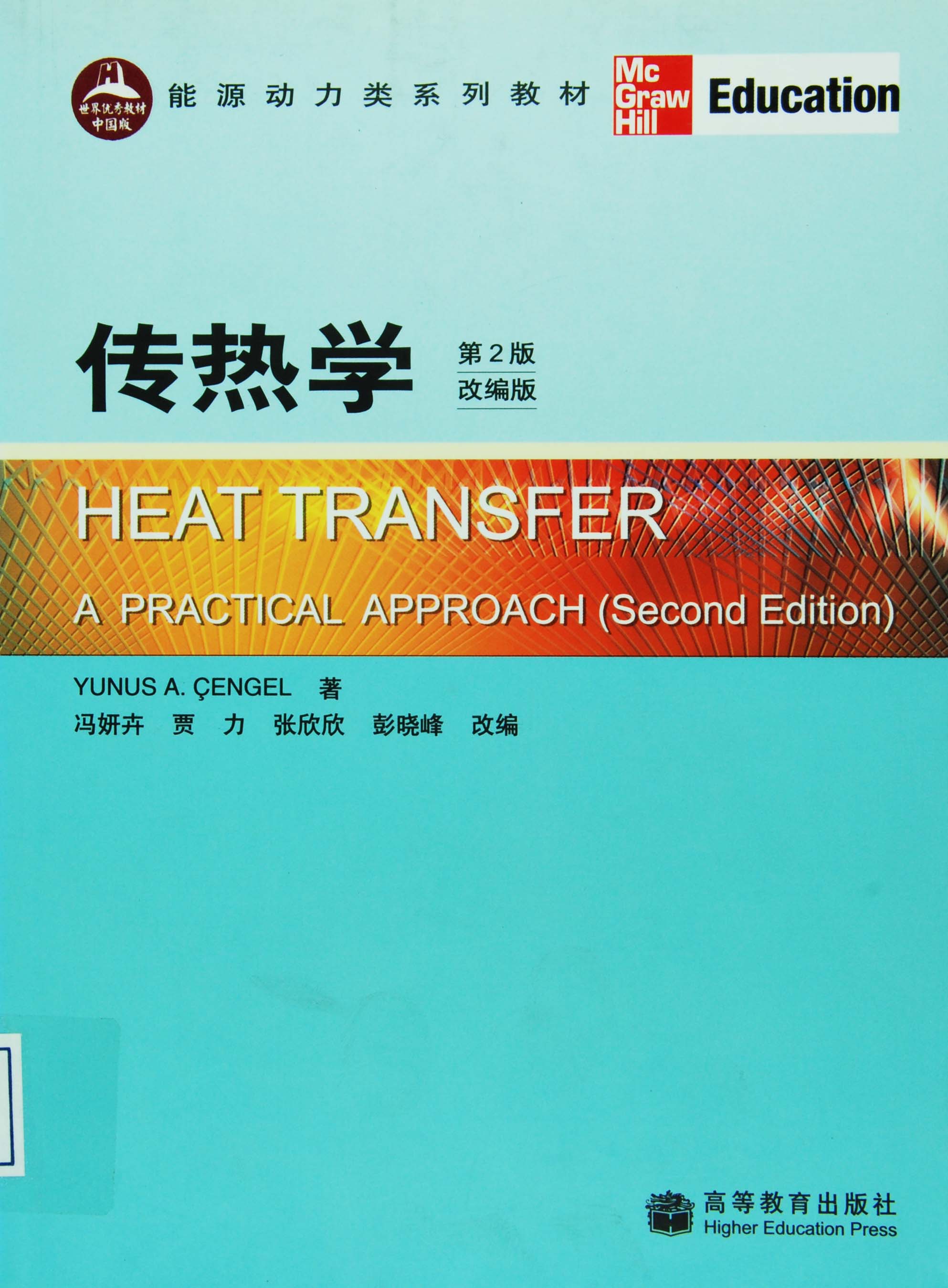近代物理学(改编版)
定价:¥59.10
作者: J.Bernstein等原著;史斌星改编
出版时间:2005-06
出版社:高等教育出版社
- 高等教育出版社
- 9787040164510
- 1版
- 117278
- 48261848-5
- 平装
- 16开
- 2005-06
- 500
- 506
- 理学
- 物理学类
- O4
- 物理类
- 本科 教育培训
目录
About the Authors Preface
1 A Review
1-1 Newton's Laws
Gravity
Hooke's Law
1-2 Work,Energy,and the Conservation of Energy
1-3 Rotations and the Center of Mass
1-4 Elastic Media and Waves
Power and Energy in Waves
Reflection and Refraction
Coherence,Interference,and Diffraction
The Doppler Shift
1-5 Thermal Phenomena
Kiic Theory
1-6 The Atomic Structure of Matter
1-7 Electricity and Magism
1-8 Electromagic Waves and Light
Energy and Momentum Transport
Polarization
Conclusion
PART 1 Quantum Mechanics
Historical Introduction
2 Waves As Particles and Particles As Waves
2-1 The Nature of Photons
2-2 The Photoelectric Effect
2-3 The Compton Effect 49
2-4 Blackbody Radiation
2-5 Conceptual Consequences of Light As Particles
2-6 Matter Waves and Their Detection
Conditions for Interference in Crystals
Testing the Wave Character of Electrons
2-7 Conceptual Consequences of Particles As Waves
Summary
Questions
Problems
3 Atoms and the Bohr Model
3-1 The Behavior and Structure of Atoms
3-2 The Bohr Atom
The Atomic Radius
The Atomic Energy
Atomic Transitions in the Bohr Model
The Franck-Hertz Experiment
3-3 Application of Bohr's Ideas to Other Systems
Rotations of Diatomic Molecules
The Harmonic Oscillator
3-4 The Correspondence Principle
*Experiments on Nearly Classical Atoms
Summary
Questions
Problems
4 The Schrodinger Equation
4-1 Wave Functions and Probabilities
The Probabilistic Interpretation
Towards an Equation for the Wave Function
4-2 The Form of the Schrodinger Equation
4-3 Expectation Values
Normalization
Expectation Values
4-4 The Time-Independent Schrodinger Equation
4-5 An Example: The Infinite Well
The Physical Meaning of Eigenfunctions and Eigenvalues
4-6 The Schrodinger Equation in Three Dimensions
Summary
Questions
Problems
Appendix
5 Wave Packets and the Uncertainty Principle
5-1 A Free Electron in One Dimension
5-2 Wave Packets
Making a Pulse
The Free Particle Moves
5-3 Uncertainty Relations
Evaluation of Widths in Position and Momentum
The Heisenberg Uncertainty Relation
5-4 The Meaning of the Uncertainty Relations
The Two-Slit Experiment
5-5 The Time-Energy Uncertainty Relation
5-6 Estimating Energies
Summary
Questions
Problems
6 Barriers and Wells
6-1 Particle Motion in the Presence of a Potential Barrier
6-2 Wave Functions in the Presence of a Potential Barrier
Continuity Conditions
Properties of the Solution for E > V0
6-3 Tunneling through the Potential Barrier
6-4 Applications and Examples of Tunneling
Nuclear Physics
Molecular Physics
Electronics
6-5 Bound States
Even and Odd Solutions
Nodes and Energies
Summary
Questions
Problems
Appendix
7 Angular Momentum and the Hydrogen Atom
7-1 The Schrodinger Equation for Central Potentials
Reduction and Partial Solution of the Schrodinger Equation
Probabilistic Interpretation of the Wave Function
*Solving for the Spherical Harmonics
7-2 Angular Momentum
Eigenvalue Equations for L2 and Lz
7-3 Allowed Energies and Electron Spatial Distribution in the Hydrogen Atom
Energy Eigenvalues for Hydrogen
Radial Eigenfunctions for Hydrogen
7-4 The Zeeman Effect
The Connection between Magic
Moments and Angular Momentum
Hydrogen in Magic Fields and the Zeeman Effect
Experimental Observation of the Zeeman Effect
The Stern-Gerlach Experiment
7-5 Spin
The Magic Moment of the Electron and the Anomalous Zeeman Effect
Modern Measurement of the Electron g-Factor
*Addition of Spin and Orbital Angular Momentum
*Spin-Orbit Coupling
*7-6 Hyperfine Structure and Magic Resonance Imaging
Nuclear Magic Resonance
Summary
Questions
Problems
8 Many Particles
8-1 The Multiparticle Schrodinger Equation
8-2 Independent Particles
8-3 Identical Particles
8-4 Exchange Symmetries and the Pauli Principle
The Total Spin of Two Electrons
Electrons in a Well
Exchange Forces
8-5 The Fermi Energy
Three Dimensions
Examples of Degenerate Matter
8-6 Degeneracy Pressure
A Back-of-the-Envelope Estimate of Degeneracy Pressure
*A More Accurate Calculation of the Degeneracy Pressure
Astrophysical Applications
Summary
Questions
Problems
PART 2 Applications
9 Complex Atoms and Molecules
9-1 Energyin the Helium Atom
9-2 Building Up the Periodic Table
How to Build Up the Periodic Table
9-3 Beyond Z=10 and General Comments
Moseley's Law and the Auger Effect
9-4 Molecules
The H2+Molecule
The H2 Molecule and Valence Bonds
Ionic Bonding
9-5 Nuclear Motion and Its Consequences
Vibrations in Molecules
Rotations of Molecules
Summary
Questions
Problems
10 Statistical Physics
10-1 The Description of a Classical Gas
10-2 The Maxwell Distribution
Experimental Verification of the Maxwell Distribution
10-3 The Boltzmann Distribution
An Elementary Derivation of the Boltzmann Distribution
A System of Molecules with Discrete Energies
10-4 Equipartition and Heat Capacity
Experiments on Equipartition
10-5 The Fermi-Dirac Distribution
Identification of the Constants
10-6 The Bose-Einstein Distribution
10-7 Transition to a Continuum
Distribution and the Calculation of Averages
The Transition to the Continuum
Finding Averages
10-8 Systems of Relativistic Particles and the Blackbody Distribution
10-9 Some Applications
The Specific Heat of Electrons in Metals
The Specific Heat of Molecules
Bose-Einstein Condensation
Liquid Helium and Superfluidity
Summary
Questions
Problems
11 Decays,Radiation from Atoms,and Lasers
11-1 Decay Rates and Exponential Decay
Exponential Decay
11-2 The Ingredients of a Quantum Calculation
Quantum Mechanical Expression for the Transition Rate
Selection Rules
11-3 Induced Transitions
11-4 Lasers
Creating a Population Inversion
Pumping Schemes
The Cavity
Pulses
Varieties of Lasers
The Gyro Laser
Cooling and Trapping of Atoms
Optical Tweezers and Scissors
Summary
Questions
Problems
12 Conductors,Semiconductors,and Superconductors
12-1 The Classical Theory of Conductivity
Mean Free Path and Collision Cross Sections
The Classical Drude Formula
12-2 The Quantum Mechanical Free-electron Model
The Quantum Mechanical Speed for the Drude Formula
Scattering from a Regular Lattice
12-3 Band Structure
The Connection between Bands and Propagation in a Lattice
The Differences between Conductors and Insulators
12-4 Semiconductors
Electrons and Holes
12-5 Intrinsic and Extrinsic Semiconductors
Fermi Energies in Doped Semiconductors
12-6 Engineering Applications of Semiconductors: Present and Future
Optical Effects in Semiconductors
The p-n Junction
Transistors
Semiconductor Lasers
Nanostructures and Integrated Circuits
Artficial Atoms
12-7 Superconductivity
Magic Properties of Superconductors
Specific Heat and the Superconducting Energy Gap
The Bardeen-Cooper-Schrieffer(BCS)Theory
Magic Flux Quantization
High Temperature Superconductors
Summary
Questions
Problems
13 The Atomic Nucleus
13-1 Neutrons and Protons
13-2 Nuclear Size and Mass
13-3 The Semiempirical Mass Formula
Nuclear Decays
13-4 Aspects of Nuclear Structure
The Liquid-drop Model
The Shell Model
13-5 Nuclear Reactions
Time Dependence in Quantum Mechanical Decays
Nuclear Decay Modes
Collision Reactions
13-6 Applications
Geological and Archeological Dating
Nuclear Chain Reactions(Fission)
Fusion Reactions
Effects of Radiation
Summary
Questions
Problems
……
14 Elementary Particle Physics
Appendix A Tables
AppendixB A Mathematical Tool Chest
Answers to Odd-Numbered Problems
Bibliography
Photo Credits
1 A Review
1-1 Newton's Laws
Gravity
Hooke's Law
1-2 Work,Energy,and the Conservation of Energy
1-3 Rotations and the Center of Mass
1-4 Elastic Media and Waves
Power and Energy in Waves
Reflection and Refraction
Coherence,Interference,and Diffraction
The Doppler Shift
1-5 Thermal Phenomena
Kiic Theory
1-6 The Atomic Structure of Matter
1-7 Electricity and Magism
1-8 Electromagic Waves and Light
Energy and Momentum Transport
Polarization
Conclusion
PART 1 Quantum Mechanics
Historical Introduction
2 Waves As Particles and Particles As Waves
2-1 The Nature of Photons
2-2 The Photoelectric Effect
2-3 The Compton Effect 49
2-4 Blackbody Radiation
2-5 Conceptual Consequences of Light As Particles
2-6 Matter Waves and Their Detection
Conditions for Interference in Crystals
Testing the Wave Character of Electrons
2-7 Conceptual Consequences of Particles As Waves
Summary
Questions
Problems
3 Atoms and the Bohr Model
3-1 The Behavior and Structure of Atoms
3-2 The Bohr Atom
The Atomic Radius
The Atomic Energy
Atomic Transitions in the Bohr Model
The Franck-Hertz Experiment
3-3 Application of Bohr's Ideas to Other Systems
Rotations of Diatomic Molecules
The Harmonic Oscillator
3-4 The Correspondence Principle
*Experiments on Nearly Classical Atoms
Summary
Questions
Problems
4 The Schrodinger Equation
4-1 Wave Functions and Probabilities
The Probabilistic Interpretation
Towards an Equation for the Wave Function
4-2 The Form of the Schrodinger Equation
4-3 Expectation Values
Normalization
Expectation Values
4-4 The Time-Independent Schrodinger Equation
4-5 An Example: The Infinite Well
The Physical Meaning of Eigenfunctions and Eigenvalues
4-6 The Schrodinger Equation in Three Dimensions
Summary
Questions
Problems
Appendix
5 Wave Packets and the Uncertainty Principle
5-1 A Free Electron in One Dimension
5-2 Wave Packets
Making a Pulse
The Free Particle Moves
5-3 Uncertainty Relations
Evaluation of Widths in Position and Momentum
The Heisenberg Uncertainty Relation
5-4 The Meaning of the Uncertainty Relations
The Two-Slit Experiment
5-5 The Time-Energy Uncertainty Relation
5-6 Estimating Energies
Summary
Questions
Problems
6 Barriers and Wells
6-1 Particle Motion in the Presence of a Potential Barrier
6-2 Wave Functions in the Presence of a Potential Barrier
Continuity Conditions
Properties of the Solution for E > V0
6-3 Tunneling through the Potential Barrier
6-4 Applications and Examples of Tunneling
Nuclear Physics
Molecular Physics
Electronics
6-5 Bound States
Even and Odd Solutions
Nodes and Energies
Summary
Questions
Problems
Appendix
7 Angular Momentum and the Hydrogen Atom
7-1 The Schrodinger Equation for Central Potentials
Reduction and Partial Solution of the Schrodinger Equation
Probabilistic Interpretation of the Wave Function
*Solving for the Spherical Harmonics
7-2 Angular Momentum
Eigenvalue Equations for L2 and Lz
7-3 Allowed Energies and Electron Spatial Distribution in the Hydrogen Atom
Energy Eigenvalues for Hydrogen
Radial Eigenfunctions for Hydrogen
7-4 The Zeeman Effect
The Connection between Magic
Moments and Angular Momentum
Hydrogen in Magic Fields and the Zeeman Effect
Experimental Observation of the Zeeman Effect
The Stern-Gerlach Experiment
7-5 Spin
The Magic Moment of the Electron and the Anomalous Zeeman Effect
Modern Measurement of the Electron g-Factor
*Addition of Spin and Orbital Angular Momentum
*Spin-Orbit Coupling
*7-6 Hyperfine Structure and Magic Resonance Imaging
Nuclear Magic Resonance
Summary
Questions
Problems
8 Many Particles
8-1 The Multiparticle Schrodinger Equation
8-2 Independent Particles
8-3 Identical Particles
8-4 Exchange Symmetries and the Pauli Principle
The Total Spin of Two Electrons
Electrons in a Well
Exchange Forces
8-5 The Fermi Energy
Three Dimensions
Examples of Degenerate Matter
8-6 Degeneracy Pressure
A Back-of-the-Envelope Estimate of Degeneracy Pressure
*A More Accurate Calculation of the Degeneracy Pressure
Astrophysical Applications
Summary
Questions
Problems
PART 2 Applications
9 Complex Atoms and Molecules
9-1 Energyin the Helium Atom
9-2 Building Up the Periodic Table
How to Build Up the Periodic Table
9-3 Beyond Z=10 and General Comments
Moseley's Law and the Auger Effect
9-4 Molecules
The H2+Molecule
The H2 Molecule and Valence Bonds
Ionic Bonding
9-5 Nuclear Motion and Its Consequences
Vibrations in Molecules
Rotations of Molecules
Summary
Questions
Problems
10 Statistical Physics
10-1 The Description of a Classical Gas
10-2 The Maxwell Distribution
Experimental Verification of the Maxwell Distribution
10-3 The Boltzmann Distribution
An Elementary Derivation of the Boltzmann Distribution
A System of Molecules with Discrete Energies
10-4 Equipartition and Heat Capacity
Experiments on Equipartition
10-5 The Fermi-Dirac Distribution
Identification of the Constants
10-6 The Bose-Einstein Distribution
10-7 Transition to a Continuum
Distribution and the Calculation of Averages
The Transition to the Continuum
Finding Averages
10-8 Systems of Relativistic Particles and the Blackbody Distribution
10-9 Some Applications
The Specific Heat of Electrons in Metals
The Specific Heat of Molecules
Bose-Einstein Condensation
Liquid Helium and Superfluidity
Summary
Questions
Problems
11 Decays,Radiation from Atoms,and Lasers
11-1 Decay Rates and Exponential Decay
Exponential Decay
11-2 The Ingredients of a Quantum Calculation
Quantum Mechanical Expression for the Transition Rate
Selection Rules
11-3 Induced Transitions
11-4 Lasers
Creating a Population Inversion
Pumping Schemes
The Cavity
Pulses
Varieties of Lasers
The Gyro Laser
Cooling and Trapping of Atoms
Optical Tweezers and Scissors
Summary
Questions
Problems
12 Conductors,Semiconductors,and Superconductors
12-1 The Classical Theory of Conductivity
Mean Free Path and Collision Cross Sections
The Classical Drude Formula
12-2 The Quantum Mechanical Free-electron Model
The Quantum Mechanical Speed for the Drude Formula
Scattering from a Regular Lattice
12-3 Band Structure
The Connection between Bands and Propagation in a Lattice
The Differences between Conductors and Insulators
12-4 Semiconductors
Electrons and Holes
12-5 Intrinsic and Extrinsic Semiconductors
Fermi Energies in Doped Semiconductors
12-6 Engineering Applications of Semiconductors: Present and Future
Optical Effects in Semiconductors
The p-n Junction
Transistors
Semiconductor Lasers
Nanostructures and Integrated Circuits
Artficial Atoms
12-7 Superconductivity
Magic Properties of Superconductors
Specific Heat and the Superconducting Energy Gap
The Bardeen-Cooper-Schrieffer(BCS)Theory
Magic Flux Quantization
High Temperature Superconductors
Summary
Questions
Problems
13 The Atomic Nucleus
13-1 Neutrons and Protons
13-2 Nuclear Size and Mass
13-3 The Semiempirical Mass Formula
Nuclear Decays
13-4 Aspects of Nuclear Structure
The Liquid-drop Model
The Shell Model
13-5 Nuclear Reactions
Time Dependence in Quantum Mechanical Decays
Nuclear Decay Modes
Collision Reactions
13-6 Applications
Geological and Archeological Dating
Nuclear Chain Reactions(Fission)
Fusion Reactions
Effects of Radiation
Summary
Questions
Problems
……
14 Elementary Particle Physics
Appendix A Tables
AppendixB A Mathematical Tool Chest
Answers to Odd-Numbered Problems
Bibliography
Photo Credits


